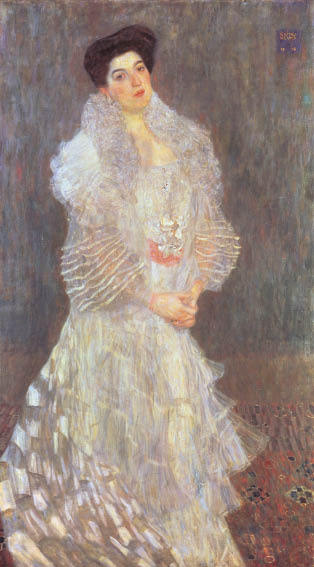Art Nouveau, or Jugendstil as it was called in Germany, came rather late to Austria, where it was sometimes called Sezessionstil. Gustav Klimt was a leading light in the breakaway Austrian Secession movement founded in 1897. Only a fool would deny that he was an exceptionally gifted artist.
He absorbed in turn 19th-century Realism, Symbolism and Impressionism. He drew so beautifully that only prudes will be shocked by his sensuality. (Indeed, it is to be hoped — or hoffentlich as they say locally — that his erotic images of ladies pleasuring themselves, rendered in soft and not so soft pencil, may have educated and liberated Freud’s neurotically uptight Viennese patients.) Klimt’s landscapes, like his portraits, are individualistic and highly original in conception. Their surfaces are beautifully crafted. His faces are full of life and hold one’s attention despite the surrounding sea of decoration and unsparing use of gold. He can be a seductive artist although not everyone likes being seduced.
More than one critic has poured scorn on various Klimt artefacts in Tate Liverpool’s gift shop and on his recent sky-high auction results.

Get Britain's best politics newsletters
Register to get The Spectator's insight and opinion straight to your inbox. You can then read two free articles each week.
Already a subscriber? Log in






Comments
Join the debate for just $5 for 3 months
Be part of the conversation with other Spectator readers by getting your first three months for $5.
UNLOCK ACCESS Just $5 for 3 monthsAlready a subscriber? Log in